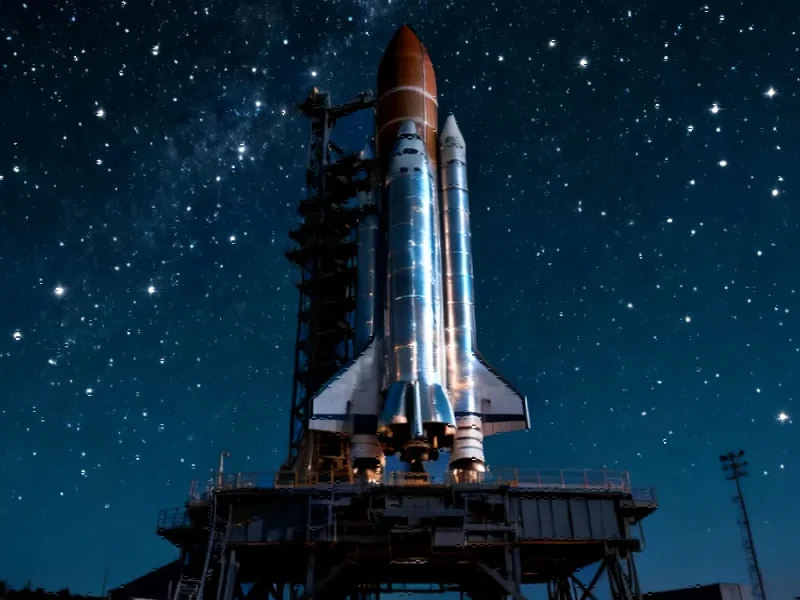NASA’s Lunar Program Faces Major Restructuring
In a surprising series of television appearances Monday morning, acting NASA administrator Sean Duffy announced significant changes to the agency’s Artemis Moon program, publicly acknowledging that SpaceX has fallen behind schedule and that NASA’s 2027 crewed lunar landing target is no longer achievable. The announcement comes amid intense political pressure to demonstrate progress in the space race against China and appears strategically timed as Duffy battles to retain his leadership position at the space agency.
Expanding the Lunar Lander Competition
Duffy revealed plans to “open up” NASA’s lunar lander contract, potentially bringing additional competitors beyond current contractors SpaceX and Blue Origin. “They’re behind schedule, and so the President wants to make sure we beat the Chinese,” Duffy stated during his Fox News appearance. “He wants to get there in his term. So I’m in the process of opening that contract up.”
The acting administrator specifically mentioned that “companies like Blue [Origin] get involved, and maybe others,” referring to what appears to be a significant shift in NASA’s approach to lunar lander development. This move represents a major departure from the current strategy that awarded exclusive contracts to SpaceX and Blue Origin for developing human landing systems.
Technical Challenges and New Approaches
SpaceX’s $2.9 billion contract, awarded in April 2021, requires the company to modify its Starship vehicle to serve as a human landing system. However, the company faces substantial technical hurdles, particularly regarding the unprecedented challenge of large-scale in-space refueling operations. Both SpaceX and Blue Origin must demonstrate the ability to refuel their vehicles in low-Earth orbit—a capability that has never been proven at the scale required for lunar missions.
When Duffy referenced Blue Origin’s potential expanded role, he wasn’t referring to the company’s existing contract that won’t deliver a lander until the 2030s. Instead, he likely meant a newly developed architecture using multiple Mk 1 landers—smaller vehicles originally designed for cargo that don’t require complex orbital refueling. This innovative approach to space exploration technology could potentially accelerate the timeline for returning humans to the Moon.
Emerging Competitors and Alternative Solutions
The reference to “maybe others” points to a third option gaining traction within NASA and traditional aerospace companies. Sources indicate that established defense contractors have been quietly developing proposals for Apollo Lunar Module-like landers that could be ready within 30 months. This government-led approach reportedly has support from NASA associate administrator Amit Kshatriya.
Lockheed Martin has publicly confirmed its readiness to support NASA’s revised lunar ambitions. “Throughout this year, Lockheed Martin has been performing significant technical and programmatic analysis for human lunar landers that would provide options to NASA for a safe solution to return humans to the Moon as quickly as possible,” said Bob Behnken, vice president of Exploration and Technology Strategy at Lockheed Martin Space.
The company’s statement highlights how strategic planning and technical analysis across the aerospace industry are converging to address NASA’s urgent lunar objectives.
Financial and Contractual Complexities
NASA faces significant challenges in restructuring its lunar lander contracts. The agency cannot easily terminate existing agreements with SpaceX and Blue Origin, especially since substantial milestone payments have already been made to SpaceX. Instead, Duffy would need to secure additional funding from Congress—a potentially expensive proposition.
According to a 2017 NASA analysis, a cost-plus, sole-source lunar lander could cost between $20 billion and $30 billion—nearly ten times the amount awarded to SpaceX in 2021. This financial reality underscores the complexity of Duffy’s proposed expansion of the lander competition and raises questions about budget allocation for strategic technology initiatives in the space sector.
Industry Reactions and Competitive Dynamics
SpaceX founder Elon Musk responded defiantly to Duffy’s comments, asserting on his social media platform X that “SpaceX is moving like lightning compared to the rest of the space industry. Moreover, Starship will end up doing the whole Moon mission. Mark my words.”
This exchange highlights the intense competition and high stakes involved in NASA’s lunar program. The agency’s decision to potentially bring additional players into the lander development process reflects both the technical challenges facing current contractors and the political imperative to demonstrate rapid progress.
Political Context and Leadership Battle
Duffy’s television appearances appear strategically timed amid a behind-the-scenes struggle for NASA’s permanent leadership. Appointed as acting administrator in July after President Trump withdrew billionaire Jared Isaacman’s nomination, Duffy has reportedly shown little interest in finding a permanent successor. Instead, he appears to be using the position to raise his political profile, with sources suggesting “Duffy wants to be president” someday.
The acting administrator’s announcement seems designed to demonstrate to the White House that he’s actively working toward achieving a lunar landing during Trump’s potential second term, which would end in January 2029. This comes as Isaacman has been building support within the White House and Congress, meeting multiple times with Trump and developing what sources describe as a “good rapport.”
Broader Implications for Space Policy
A Republican advisor to the White House told Ars that while Duffy’s move beyond rhetoric about beating China to the Moon is positive, the administration’s mandate focuses on dominating the commercial space industry rather than awarding large cost-plus contracts. “Duffy hasn’t implemented any of the strategic reforms of Artemis that the president proposed this spring,” the source noted, suggesting the acting administrator is being “co-opted by the deep state at NASA.”
This political dimension adds another layer of complexity to NASA’s lunar ambitions, as the agency must navigate both technical challenges and Washington politics. The situation demonstrates how leadership decisions in major organizations can have far-reaching consequences for strategic initiatives.
Looking Ahead: The New Space Race
Duffy’s announcement signals a potential turning point in NASA’s approach to lunar exploration. By opening the lander competition to additional players, the agency acknowledges the difficulties facing its current contractors while responding to political pressure to accelerate the timeline for returning Americans to the Moon.
The coming months will reveal whether this strategy can deliver on its promises or if it represents another chapter in the complex, politically charged effort to establish a sustained human presence on the lunar surface. What’s clear is that the space race—both international and between American companies—has entered a new, more competitive phase with significant implications for the future of space exploration and the distribution of government contracts in the aerospace sector.
This article aggregates information from publicly available sources. All trademarks and copyrights belong to their respective owners.
Note: Featured image is for illustrative purposes only and does not represent any specific product, service, or entity mentioned in this article.



